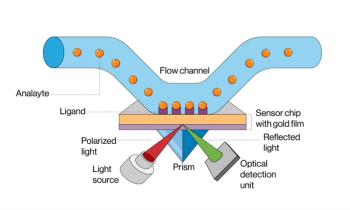
OSIRIS-APEX: Unveiling the Secrets of Asteroid Apophis Flyby Post-Earth Encounter
NASA’s OSIRIS-REx spacecraft embarks on a new mission—OSIRIS-APEX—to study asteroid Apophis after its anticipated close flyby of Earth on Friday, April 13, 2029. Utilizing advanced spectroscopy and other instruments, the mission will provide unprecedented insights into how planetary encounters reshape small bodies in our solar system.
NASA's The Origins, Spectral Interpretation, Resource Identification, and Security–Regolith Explorer (OSIRIS-REx) mission, famed for its sample collection and mapping mission from asteroid Bennu, is set to embark on an extraordinary new chapter. Following the delivery of Bennu samples to Earth in 2023, the spacecraft will now redirect its journey toward asteroid Apophis, a 340-meter-wide body poised to make an exceptionally close approach to Earth in 2029. The new mission, dubbed OSIRIS–Apophis Explorer (OSIRIS-APEX), promises to unlock a wealth of knowledge about how such close planetary encounters impact asteroids (1,2).
Apophis will fly within 32,000 kilometers of Earth—closer than most satellites—on Friday, April 13, 2029, marking the largest object in recorded history to approach our planet this closely. This rare event presents an invaluable opportunity for researchers, especially those keen on planetary defense and asteroid dynamics. OSIRIS-APEX aims to study the effects of Earth's gravity on Apophis, documenting the changes in its orbit, spin state, and potentially even surface composition (1,2).
Discover More:
Leveraging Advanced Spectroscopy for Asteroid Insights
Spectroscopy lies at the heart of OSIRIS-APEX's investigative tools. The mission will employ a suite of spectrometers, including the OSIRIS-REx Visible and Infrared Spectrometer (OVIRS) and the OSIRIS-REx Thermal Emission Spectrometer (OTES), both of which were critical in analyzing Bennu's surface. These instruments will provide detailed spectral data that help decode the composition and structural changes in Apophis before, during, and after its close encounter with Earth (1).
At Bennu, OVIRS and OTES mapped the asteroid's surface composition and temperature, uncovering high porosity and unexpected structural properties. These instruments can detect minute changes in surface material, providing clues to the thermal and physical behavior of the asteroid. Scientists are particularly interested in how Apophis will react to the gravitational pull of Earth, with the possibility of seismic activity mobilizing surface material—an event that could expose subsurface layers for the first time (1). OVIRS operates over the spectral range of 25,000–2,326 cm⁻¹ or (0.4–4.3 μm).
By analyzing spectral absorption bands in Apophis' silicate minerals, OTES, which measures a spectral range of ∼1750–100 cm−1 (∼5.7–100 μm), will allow scientists to track any surface evolution due to tidal forces. This will also help in assessing how planetary encounters influence small asteroids over time, a phenomenon largely unobserved until now (1).
Seizing a Rare Opportunity
The mission to Apophis capitalizes on a rare natural event. When Apophis passes within 0.1 lunar distance from Earth, gravitational forces will alter its spin state, orbit, and potentially trigger seismic surface disturbances. As the asteroid spins and shifts, OSIRIS-APEX will capture real-time data, offering the most detailed observations of a tidal disruption on a near-Earth object (NEO) (1).
The knowledge gained from this encounter could vastly improve our understanding of how asteroids behave when subjected to planetary forces. While similar studies have been conducted through simulations, direct observations of such phenomena remain limited. The findings from Apophis could serve as a template for understanding other small bodies in the solar system and beyond (1).
Planetary Defense and Future Exploration
One of the most significant aspects of the OSIRIS-APEX mission is its contribution to planetary defense. While Apophis poses no immediate threat to Earth, it represents the type of asteroid that could potentially be hazardous in the future. By gathering detailed geotechnical and structural data from Apophis, scientists will be better equipped to devise defense strategies against potential asteroid impacts (1).
In addition to its contributions to planetary defense, OSIRIS-APEX will test innovative asteroid excavation techniques. As the mission progresses, the spacecraft will deploy its thrusters to excavate regolith on Apophis, similar to the approach it used on Bennu. Observations of this regolith reveal the asteroid's subsurface properties, further advancing our understanding of small-body dynamics and material composition (1).
A Collaborative Endeavor
The OSIRIS-APEX mission is a result of collaborative efforts from multiple institutions. Researchers from NASA’s Goddard Space Flight Center, the University of Arizona Space Institute, Jet Propulsion Laboratory, KinetX, and others are contributing to the mission. The research was recently published in The Planetary Science Journal, with key authors including Daniella N. DellaGiustina, Michael C. Nolan, Anjani T. Polit, Michael C. Moreau, and Dathon R. Golish (1).
Their work underscores the importance of leveraging cutting-edge spectroscopy and other technological tools to enhance our understanding of the solar system’s small bodies. OSIRIS-APEX, with its unique capability to revisit a second asteroid, stands as a testament to the ingenuity and adaptability of modern space exploration (1).
Looking Forward
With the OSIRIS-APEX mission, scientists are poised to gain new insights into how asteroids like Apophis are affected by planetary encounters. The mission's detailed observations will not only deepen our knowledge of Apophis but also help prepare humanity for potential asteroid impacts in the future. By studying the aftermath of Apophis' close brush with Earth, OSIRIS-APEX will continue the legacy of OSIRIS-REx, pushing the boundaries of asteroid exploration and planetary science (1,2).
References
(1) DellaGiustina, D. N.; Nolan, M. C.; Polit, A. T.; Moreau, M. C.; Golish, D. R.; Simon, A. A.; Adam, C. D.; Antreasian, P. G.; Ballouz, R. L.; Barnouin, O. S.; Becker, K. J. OSIRIS-APEX: an OSIRIS-REx extended mission to asteroid apophis. Planet. Sci. J. 2023, 4 (10), 198. DOI
(2) Brown, G. M.; Wibben, D. R.; Antreasian, P. G.; Getzandanner, K. M. Leveraging Resonant Terminator Orbits for the Trajectory Design of OSIRIS-APEX at (99942) Apophis. In 46th Annual AAS Guidance, Navigation and Control (GN&C) Conference (No. AAS 24-063), 2024,
Newsletter
Get essential updates on the latest spectroscopy technologies, regulatory standards, and best practices—subscribe today to Spectroscopy.





